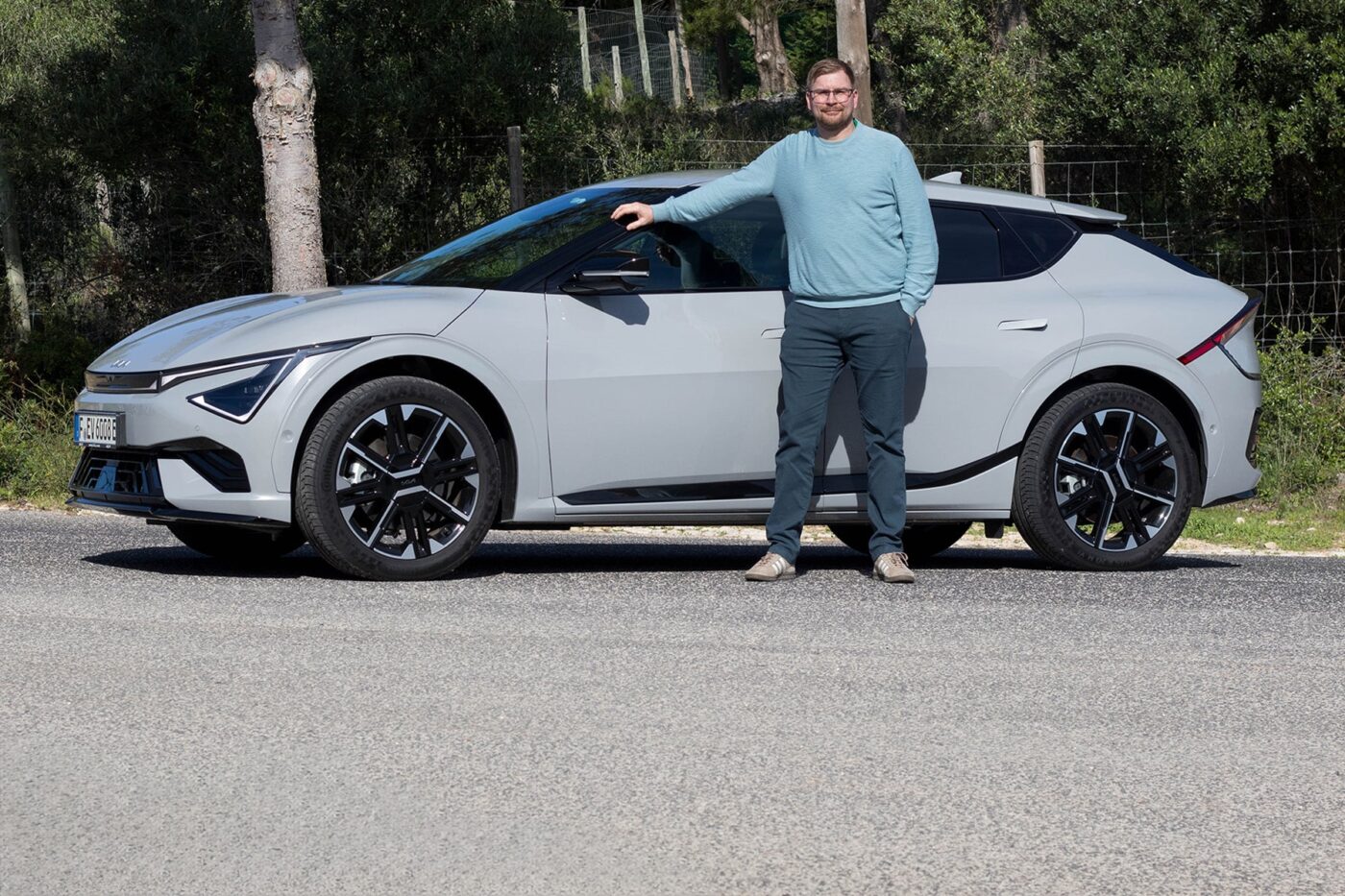
First drive in the Kia EV6: Range upgrade for the long-distance pro
The South Korean car manufacturer caused quite a stir with the launch of the Kia EV6 in autumn 2021. Kia has already sold more than 210,000 units of this model, including almost 18,000 in Germany. The 4.70 metre-long crossover has now been redesigned.
From the outside, the facelift is mainly recognisable by the revised front end. The new design of the LED daytime running lights is particularly striking. Even before the facelift, the EV6 had an unmistakable light signature, even within the Kia model range. At the rear, the graphics of the rear light unit, which extends across the entire width of the vehicle, are now also characterised by what Kia calls the ‘Star Map’ concept. Regarding the side view, connoisseurs will probably only notice the new wheel designs. Otherwise, the EV6 remains unchanged here. With its changes, the electric car is now closer to the new design language of the EV3 and EV9, but still stands out within the South Korean company’s entire model range.
Kia throws out piano lacquer
I like the sharpened front and rear sections. Others might find the pre-facelift more appealing. And so the old rule applies: tastes vary. On the other hand, a change in the interior, which I noticed immediately when I opened the driver’s door, is likely to provide much less material for discussion: Kia has almost completely abandoned the piano lacquer look. Thank you! Among other things, the revised centre console has a black hairline look reminiscent of brushed black aluminium.
However, Kia has also revised the steering wheel. The standard steering wheel is two-spoke, while the GT-line comes with a three-spoke sports steering wheel. Not only does it allow a better view of the instrument cluster, but it is also capacitive. Regular little jerks on the steering wheel to check whether your hands are still on the wheel are now a thing of the past.
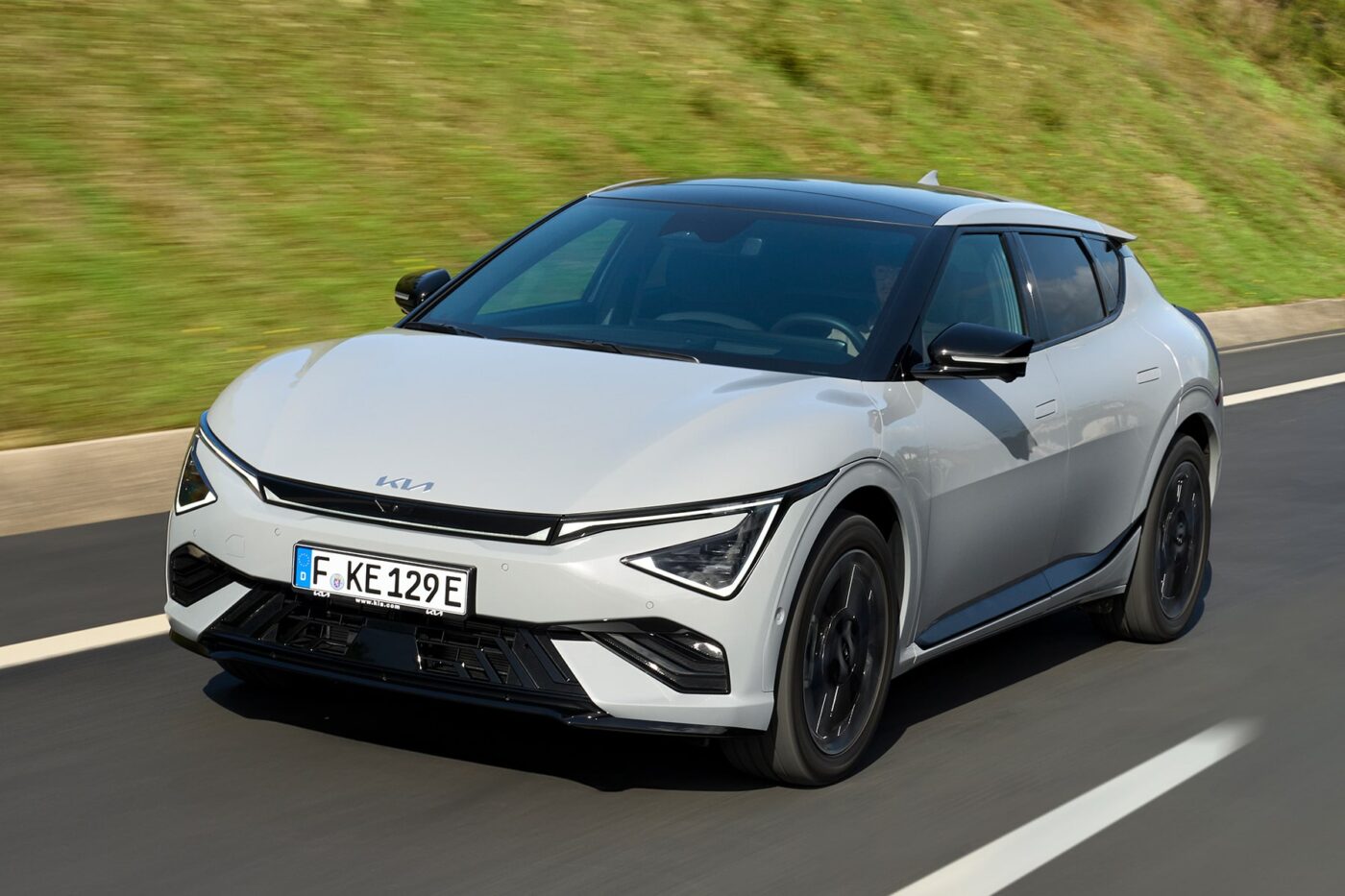
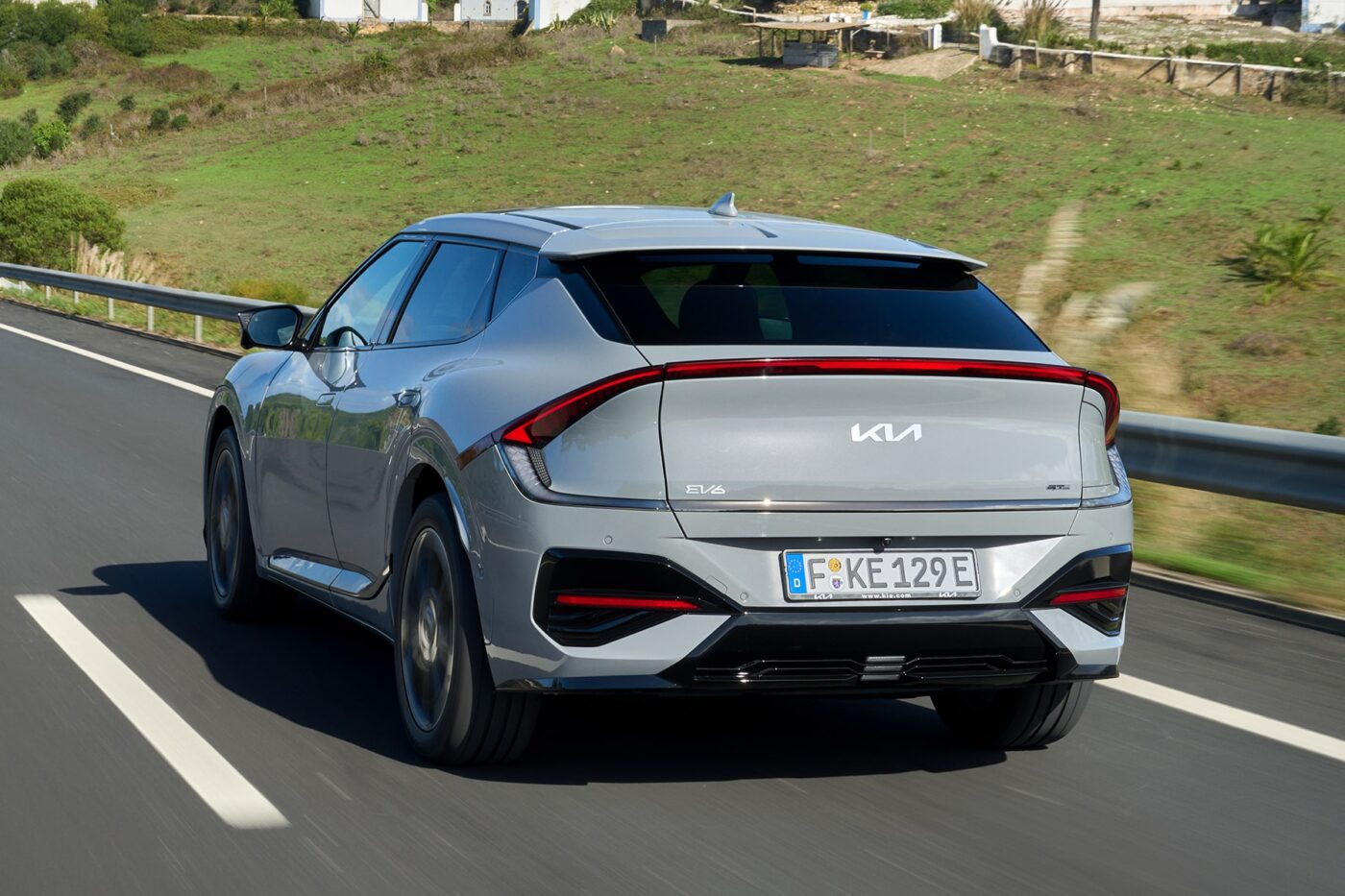
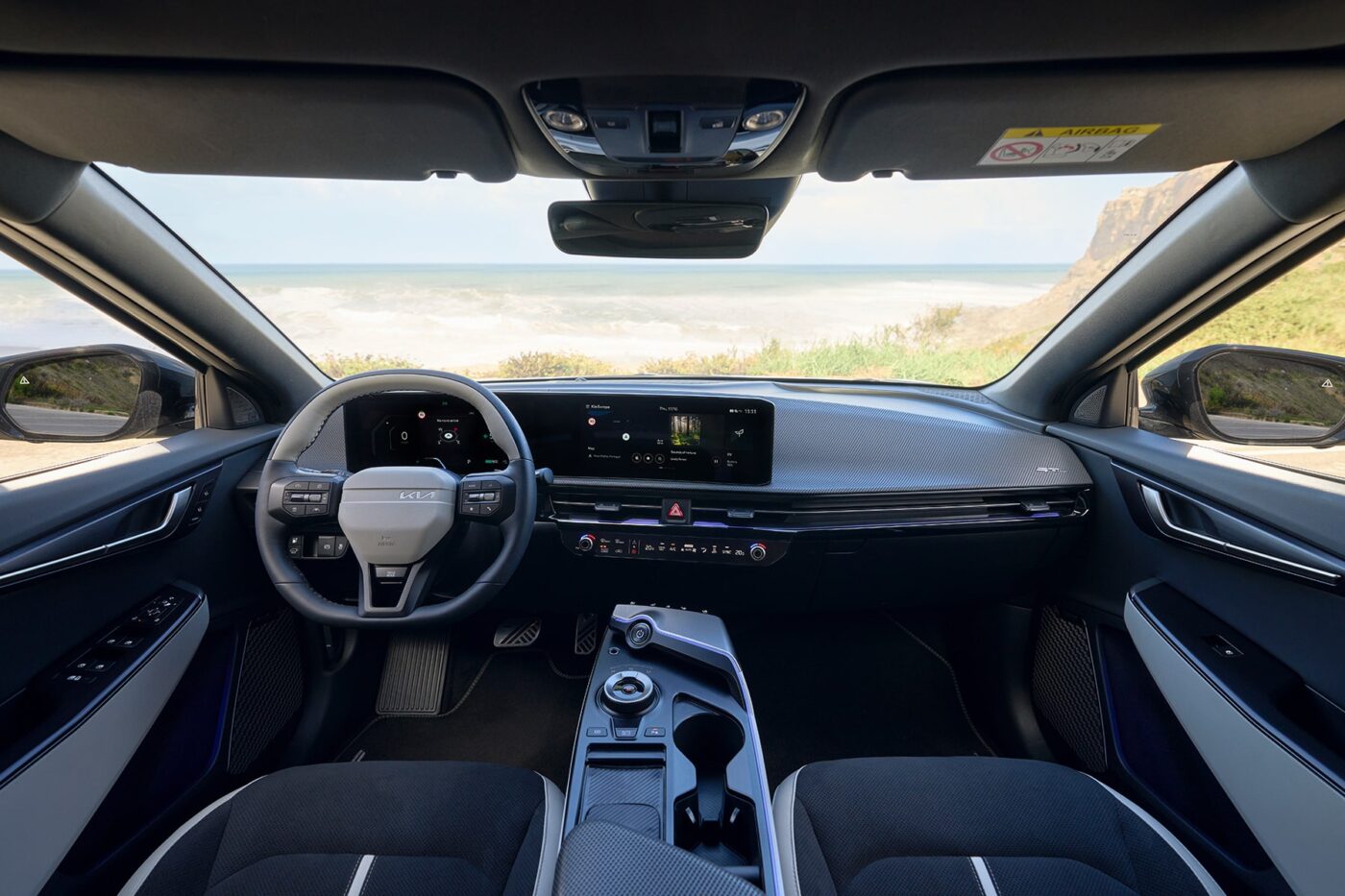
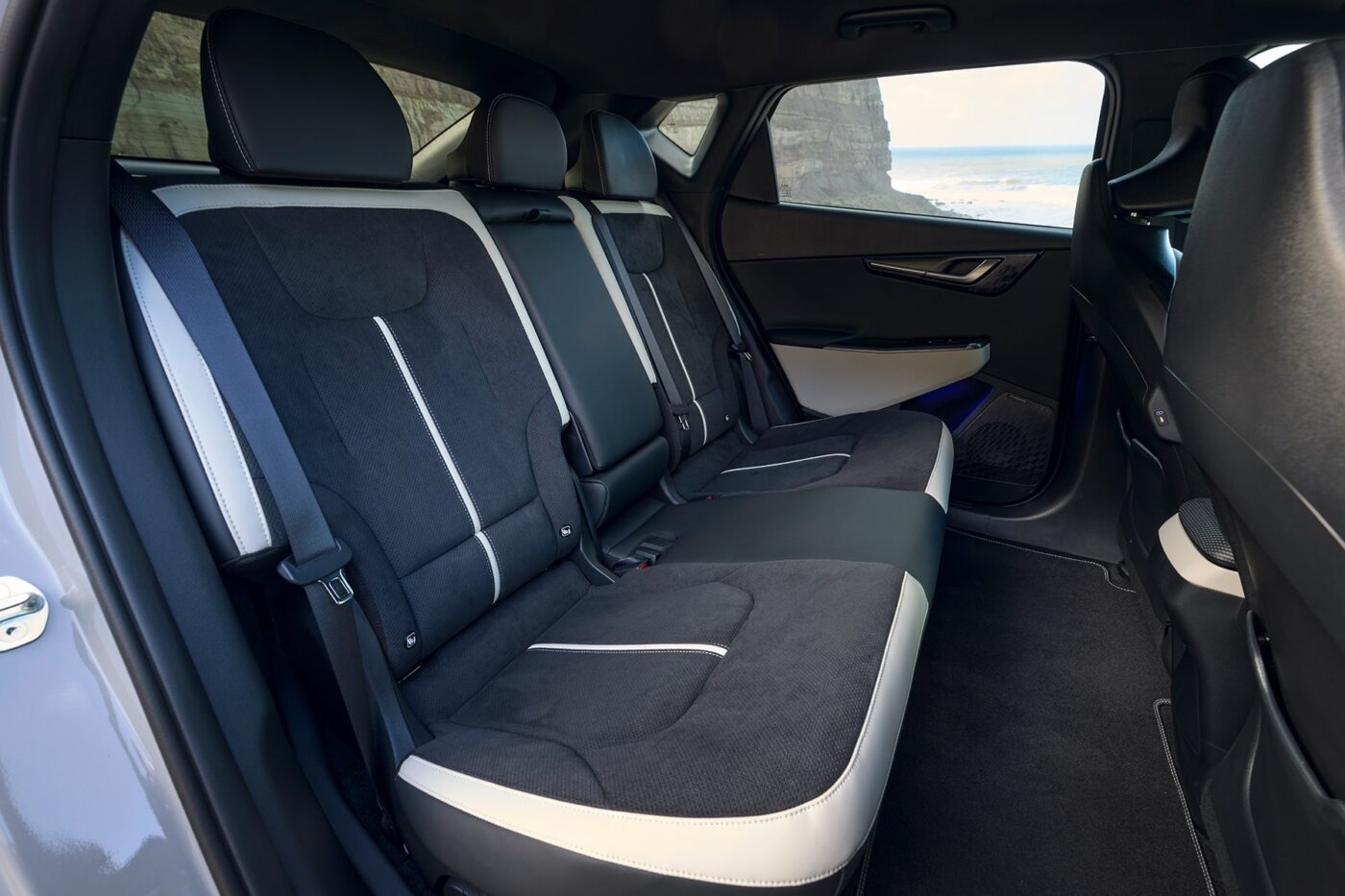
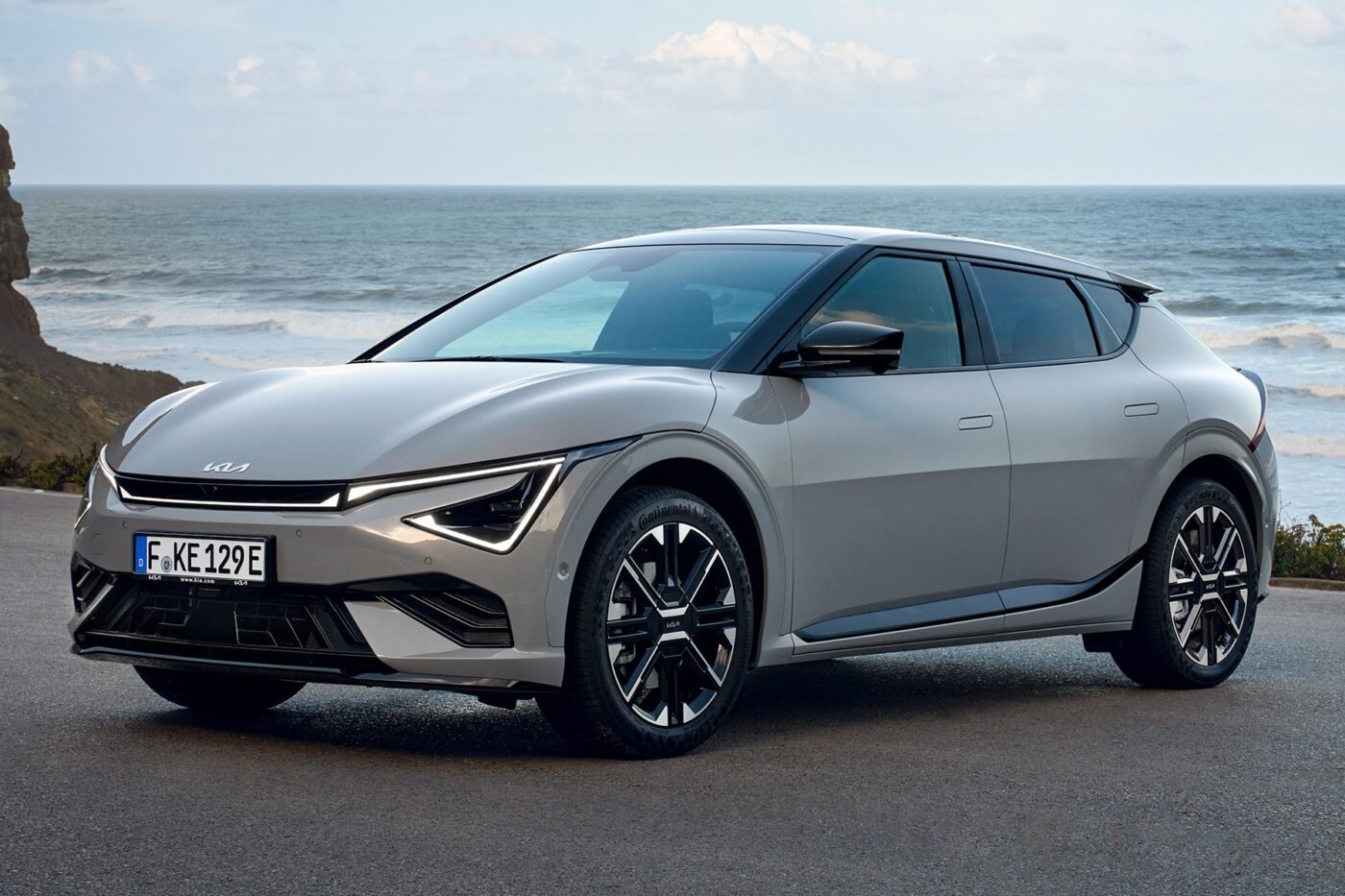
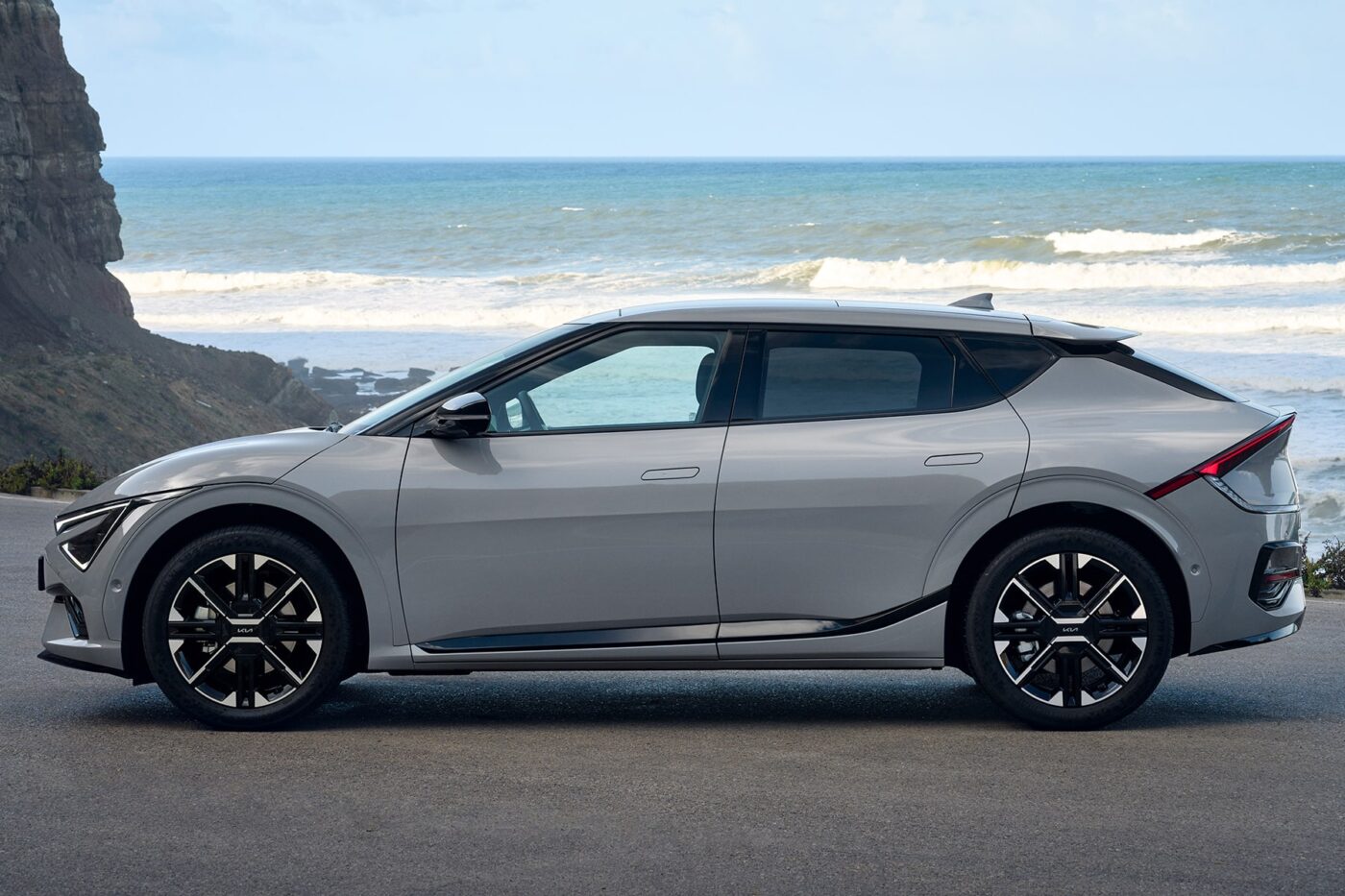
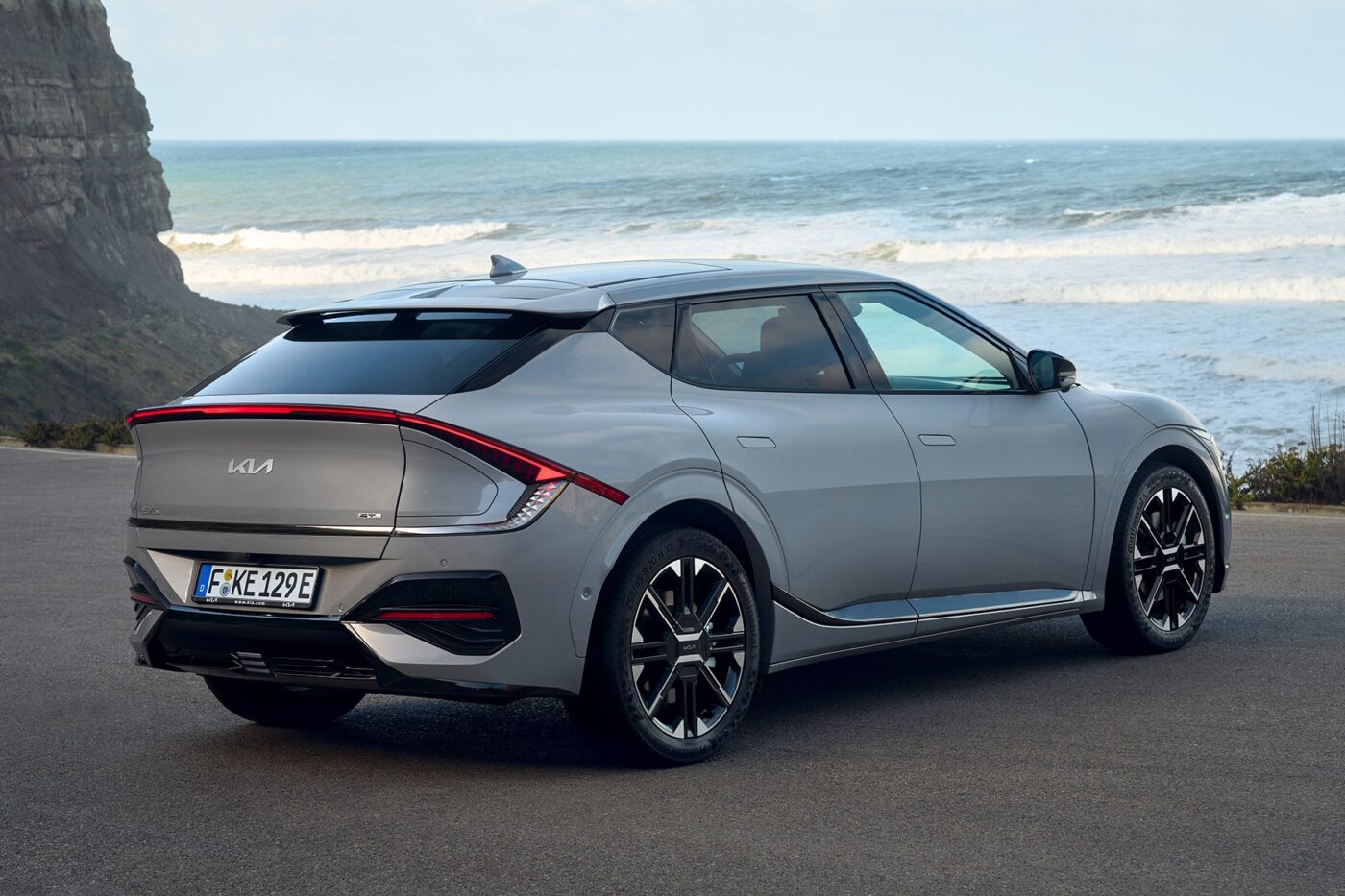
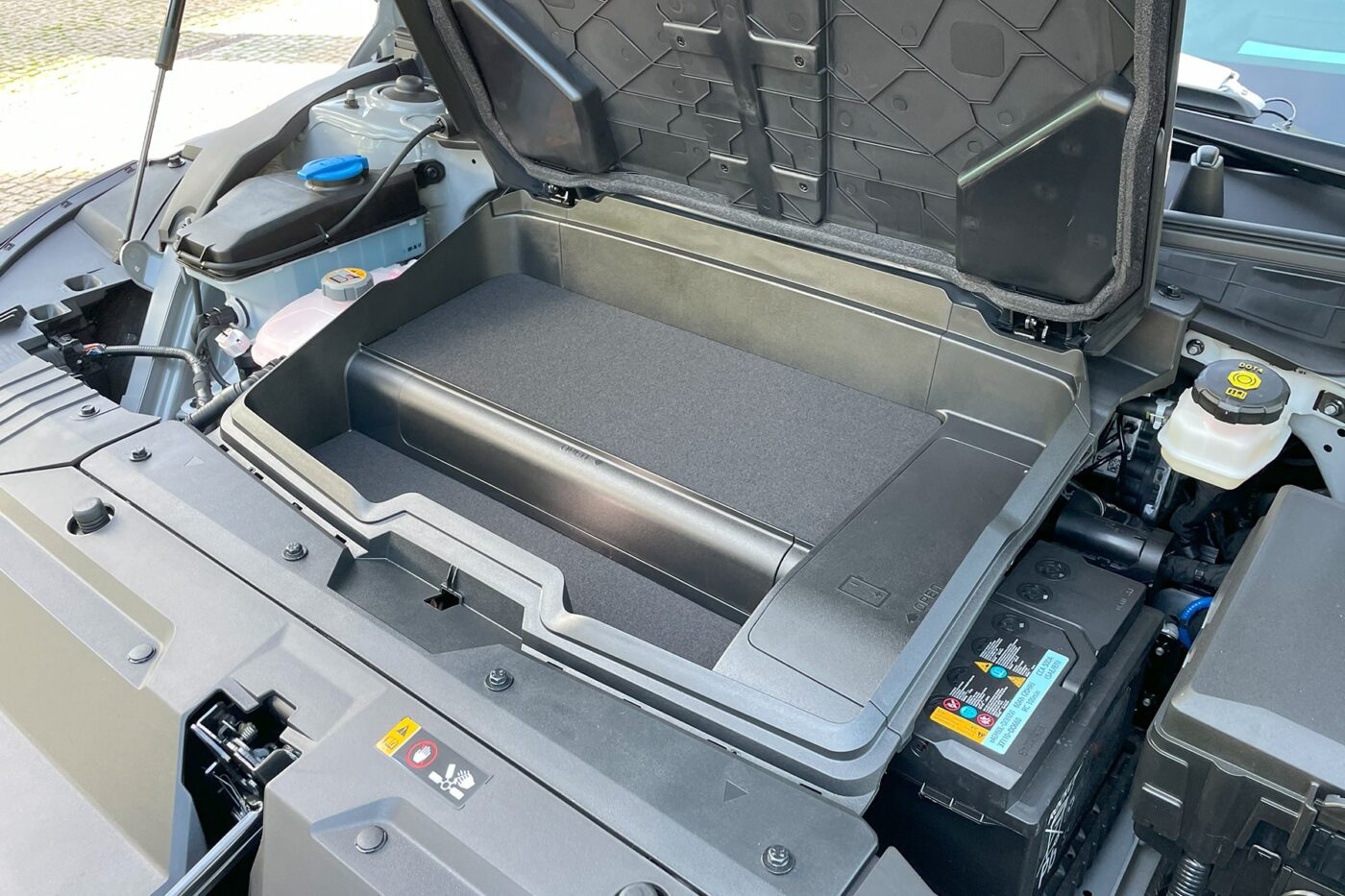
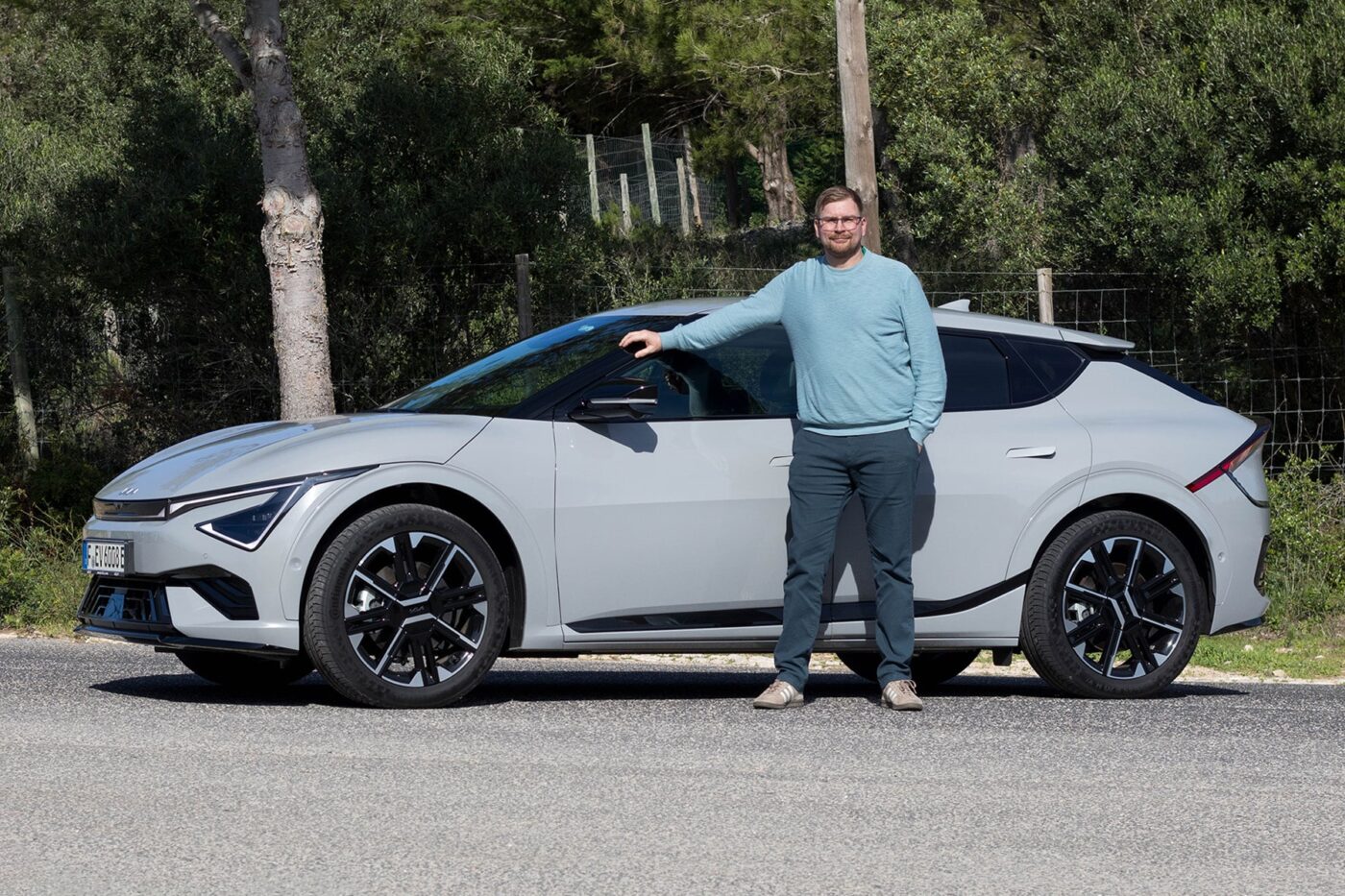
So I take a seat behind the wheel and notice that, in addition to the good view of the wide panoramic display, which consists of two 12.3-inch screens, the infotainment system has also been updated. However, the control bar in the centre of the dashboard, which is used to control the media and air conditioning, has not been revised. Although I am familiar with the models from the Hyundai Group, I had to get used to the controls again.
Unchanged drive range
While Kia has sharpened up the exterior and interior and improved the infotainment system, no changes have been made to the drive systems. The EV6 will continue to be offered with the three familiar drive variants. The standard version with the small battery is therefore only available with a 125 kW electric motor in the rear. The large battery is optionally available with a 169 kW rear-wheel drive or the 239 kW all-wheel drive with two electric motors. There are actually four variants. As the GT – not the GT-line – was only presented a few days ago and its performance data (478 kW instead of the previous 430 kW) are still provisional, it is not included in the list.
The drive systems are combined with what the South Koreans believe is an improved chassis. In the first generation of the EV6, this was still very stiff and was criticised accordingly. For my part, however, I got on well with it. For the first drive of the facelift in sunny Portugal, we had the EV6 GT-line with the 239 kW all-wheel drive and the large battery at our disposal. On the winding roads along the Portuguese coast, I found the suspension too soft. In addition, I personally found the steering too indirect for these sections. However, this first impression was somewhat dispelled when driving on the motorway. Whether the suspension can now offer a higher level of comfort on long journeys will be revealed after a detailed test on German motorways. However, one thing can already be said: Thanks to improved sound insulation of the rear-wheel drive, the noise level in the interior has been reduced. And yes, the very quiet whirring of the rear motor has now almost completely disappeared.
Higher energy content with the same weight
While Kia has not made any changes to the drive systems – we’ll leave the GT out of the equation here – the energy required for propulsion is now supplied by the fourth generation of batteries, which have not become any heavier despite their higher energy density. The energy content of the small battery is now 63 kWh (previously 58 kWh) and 84 kWh for the large battery (previously 77.4 kWh). As a result, the electric range has increased, at least on paper. With the small battery, 428 kilometres should now be possible instead of 394, while the large battery now has 582 kilometres instead of 528.
It is true that no representative consumption values could be determined during the first drive. However, the first impression conveyed what the theoretical values on paper already showed: due to the unchanged drive configurations and the increased energy content of the batteries, the real achievable ranges will be slightly higher than those of the predecessor. We will have to wait for a detailed test to find out what this means in detail.
Charging time remains the same despite increased energy content
Although the batteries have become larger, the charging time of 18 minutes for the standard range from ten to 80 per cent remains the same. The value applies to both the large and the small chemical storage units. It was primarily made possible by improvements in temperature management and heat distribution, which ultimately increased the charging capacity. While the maximum charging power for the small battery was still 180 kW, it can now reach up to 195 kW at its peak. The leap is even greater for the large battery. Instead of the previous 240 kW, it is now 258 kW. Values that are among the best in the price and vehicle class.
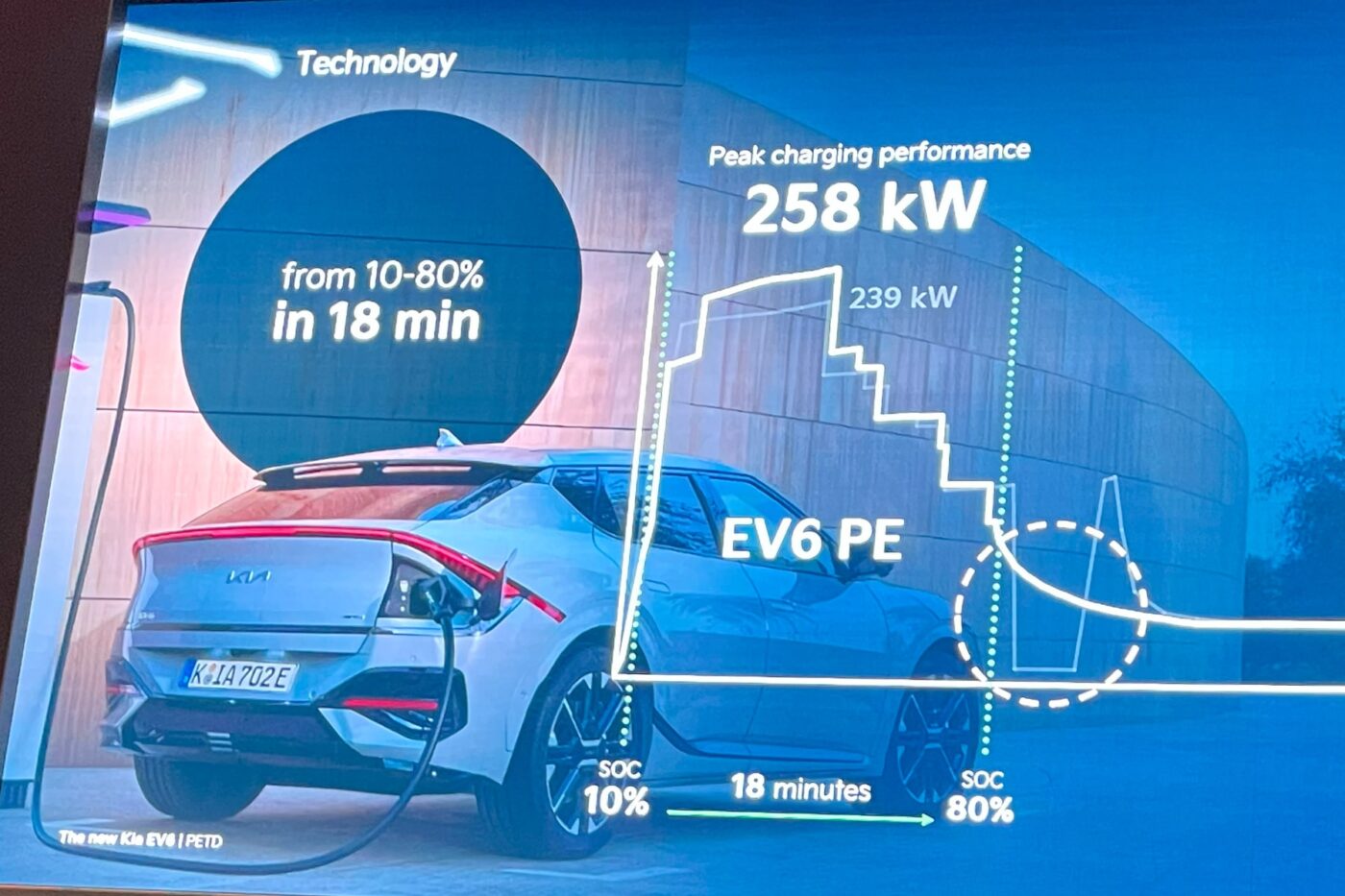
It goes without saying that the values can understandably only be achieved under ideal conditions. During my test in the summer of 2022, there was no automatic preconditioning of the battery. In summer, the lack of preconditioning didn’t have too much of an impact, even if the charging curves were very different at times. However, it is an important feature for the colder months. The South Koreans finally introduced this function for the 2023 model year.
However, it only works if a route with charging stops has been planned. Although the EV route planner with automatic charging planning has been available since July 2023, I think Kia needs to improve on this. Yes, several charging stops are planned to reach the destination. On very long journeys that go beyond five stops, you don’t receive any information about the sixth or even seventh charging stop. Admittedly, this is a rather rare case. However, even for the first stop, you are not informed of the State of Charge (SoC) at which you will reach the charging station. This is only displayed “shortly before,” they say. Too bad, Kia should make improvements here. Other manufacturers provide detailed information right from the start – with which the driver can then decide for themselves whether to follow the Kia system’s suggestion or plan manually. If you don’t have this information, you have to rely on the Kia.
To come back to preconditioning: With the facelift, the function of being able to start the heating of the battery manually via the infotainment was finally included. There is no information on how long this has to run until the battery has reached the right temperature for the optimum charging curve. Here too, other manufacturers show how it can be done better. VW and Mercedes, for example, tell me as the driver what charging capacity is currently possible and whether this is the maximum.
However, should the charging process take longer because the manual or automatic preconditioning is not sufficient, Kia offers the equipment-dependent ‘Premium Relaxion Seats,’ which can be moved into a reclining position at the touch of a button.
| EV6 125 kW | EV6 168 kW | EV6 239 kW | |
|---|---|---|---|
| Drive | RWD | RWD | AWD |
| Performance | 125 kW | 168 kW | 239 kW |
| Torque | 350 Nm | 350 Nm | 605 Nm |
| Acceleration | 8.7 s | 7.7 s | 5.3 s |
| Top speed | 185 kph | 188 kph | 188 kph |
| WLTP range | 428 km | 582 km | 546 km |
| Battery capacity | 63 kWh | 84 kWh | 84 kWh |
| Charging capacity DC | 195 kW | 258 kW | 258 kW |
| Charging time DC 10-80% | 18 min | 18 min | 18 min |
| Charging capacity AC | 11 kW | 11 kW | 11 kW |
| Charging time AC 10-100% | ca. 5:50 | ca. 7:35 | ca. 7:35 |
| Trunk volume | 490 l | 490 l | 490 l |
| Frunk | 52 l | 52 l | 20 l |
| Tow capacity | 750 kg | 1,800 kg | 1,800 kg |
| Price | 44,990 euros | 49,990 euros | 53,990 euros |
In any case, Kia already offers a whole range of features as standard in the EV6. The basic ‘Air’ version with the small battery starts at 44,990 euros (49,990 euros, large battery). It makes it cheaper than before, but offers more. Standard features include a heated steering wheel, height-adjustable front seats with heated seats, heated and electrically folding exterior mirrors, reversing camera, front and rear parking sensors, Lane Keeping Assist and Motorway Assist. However, there are not many other options to choose from. The inductive charging option for smartphones or the head-up display is not available in the ‘Air.’ In contrast, the ‘Earth’ and ‘GT-line’ variants offer more standard equipment and choice. However, Kia only offers the heat pump as an option (for all equipment lines).
After a short drive, however, it is not possible to say much about the assistance systems. Unfortunately, there wasn’t enough time. Together with the EV route planning and charging stops, I would be happy to take a closer look at this part for you in a detailed test.
Conclusion
The bottom line is that the facelift of the EV6 was not absolutely necessary. What Hyundai-Kia was able to get out of the platform called E-GMP and the ‘800 Volt’ technology was already impressive in the first edition of the model around three years ago. I was able to get an impression of the long-distance capabilities myself a good two years ago. But with the technical upgrade, the model is even more suitable for long distances than before.
The electric crossover also offers plenty of space for family and luggage (490 litres of boot space) and, at 1,800 kilograms (large battery, small battery only 750 kilograms), can now tow 200 kilograms more than before.
Despite some weaknesses, the battery-electric car scores highly in the core areas of range, charging power, charging time, workmanship and comfort. The facelift has even gone one better. However, the model has not become more expensive. On the contrary, the base prices have even been lowered and the standard equipment has been increased. It still doesn’t make it a bargain, especially when more equipment is added. However, even after the revision, the EV6 remains an interesting model for families and, above all, for commercial fleets – not only with the large battery, but also with the small one.

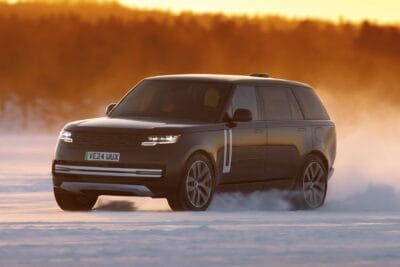
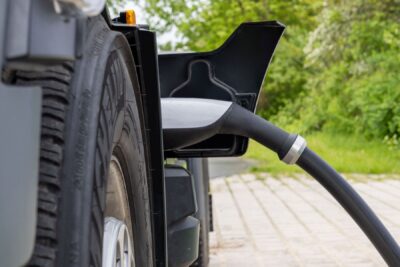
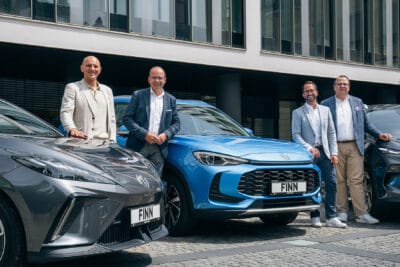
0 Comments